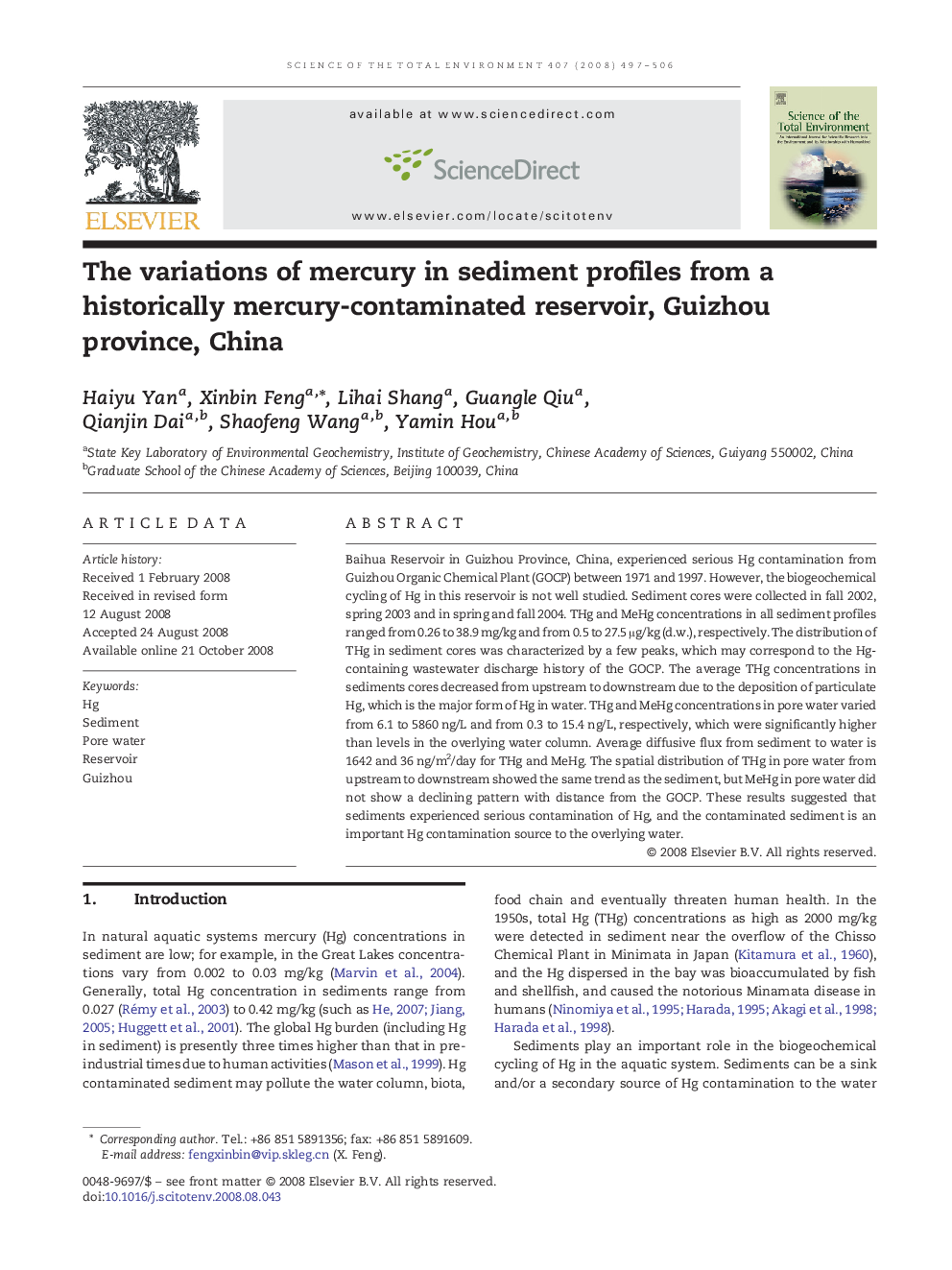| Article ID | Journal | Published Year | Pages | File Type |
|---|---|---|---|---|
| 4432505 | Science of The Total Environment | 2008 | 10 Pages |
Baihua Reservoir in Guizhou Province, China, experienced serious Hg contamination from Guizhou Organic Chemical Plant (GOCP) between 1971 and 1997. However, the biogeochemical cycling of Hg in this reservoir is not well studied. Sediment cores were collected in fall 2002, spring 2003 and in spring and fall 2004. THg and MeHg concentrations in all sediment profiles ranged from 0.26 to 38.9 mg/kg and from 0.5 to 27.5 μg/kg (d.w.), respectively. The distribution of THg in sediment cores was characterized by a few peaks, which may correspond to the Hg-containing wastewater discharge history of the GOCP. The average THg concentrations in sediments cores decreased from upstream to downstream due to the deposition of particulate Hg, which is the major form of Hg in water. THg and MeHg concentrations in pore water varied from 6.1 to 5860 ng/L and from 0.3 to 15.4 ng/L, respectively, which were significantly higher than levels in the overlying water column. Average diffusive flux from sediment to water is 1642 and 36 ng/m2/day for THg and MeHg. The spatial distribution of THg in pore water from upstream to downstream showed the same trend as the sediment, but MeHg in pore water did not show a declining pattern with distance from the GOCP. These results suggested that sediments experienced serious contamination of Hg, and the contaminated sediment is an important Hg contamination source to the overlying water.
